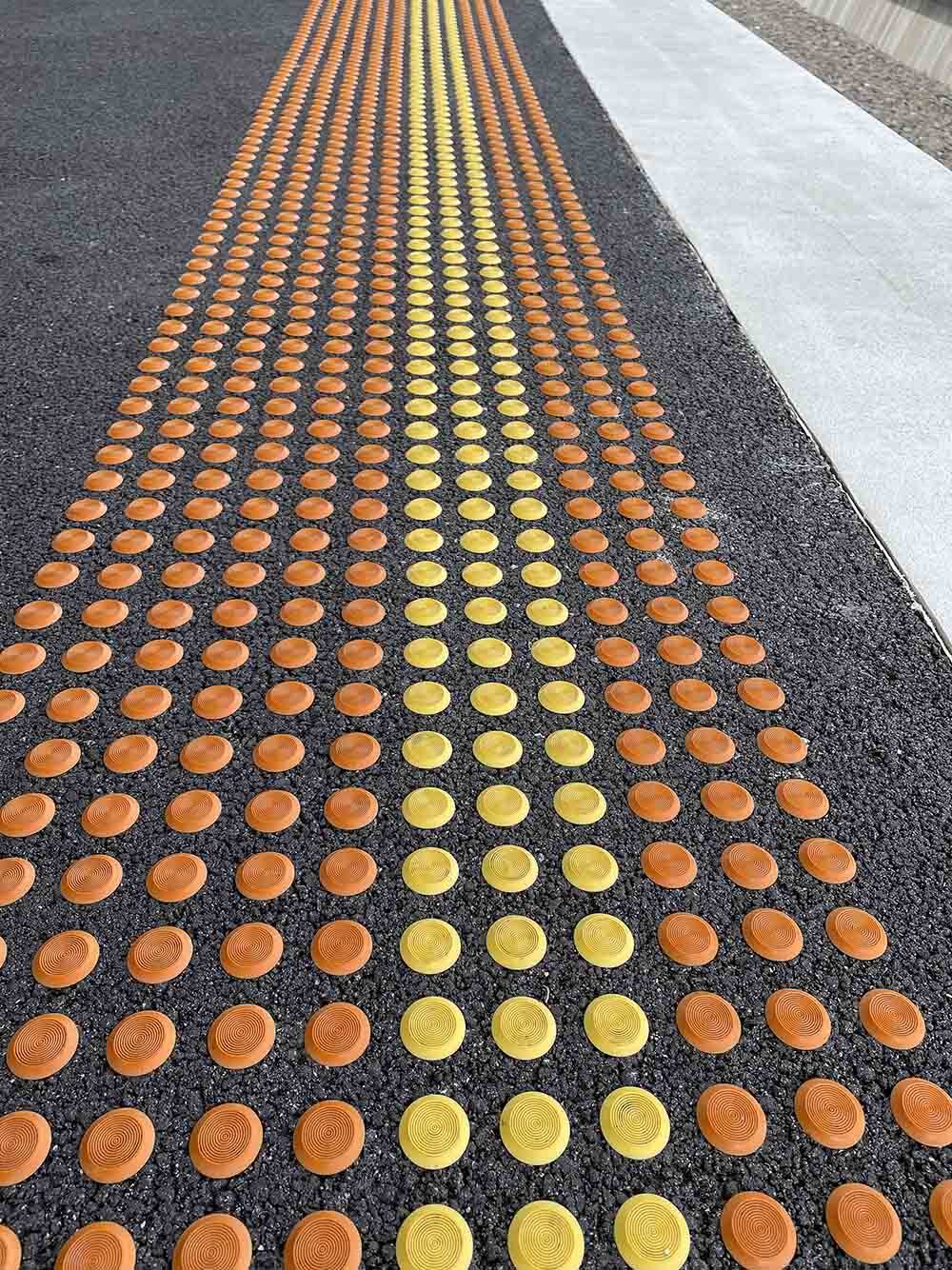
Luminance Contrast Calculator
Luminance Contrast is the amount of light reflected from one surface or component, compared to the amount of light reflected from another surface or component. The amount of light reflected from each surface or component is referred to as the Luminance Reflectance Value (LRV).
Many manufacturers and suppliers provide the luminance reflectance values for their products, however there are a number of materials that have variations within each material and between batches, such as timber, stone and concrete, which cannot be assigned an LRV without testing the finished installation.
Realm Access provides luminance contrast testing services. During the design phase we can test samples to provide peace of mind the proposed finishes will achieve a compliant contrast. We also provide testing of constructed works for final compliance sign-off.
If you would like further information or a quote for luminance contrast testing for your project, please do not hesitate to contact us.
Minimum Luminance Contrast Requirements for Compliance
For buildings and premises that are subject to the National Construction Code / Building Code of Australia (NCC / BCA), the Disability (Access to Premises – Buildings) Standards (often referred to as the Premises Standards), and the Disability Standards for Accessible Public Transport (DSAPT), there are mandatory requirements to provide minimum levels of luminance contrast to certain elements within accessible areas as outlined in the lists below.
Minimum 30%
Integrated Tactile Ground Surface Indicators (TGSIs) or ‘tile’ type TGSIs which have indicators with the same luminance as the base surface
Doorways
Stair nosing strips
Visual indicator strips / glazing decals
Toilet seats in accessible sanitary facilities and accessible adult change facilities
Statutory signage for sanitary facilities, areas with hearing augmentation, exits and some directional and wayfinding signage
Lift control buttons
Handrails (for public transport projects)
Potential obstacles that abut accessways such as columns, posts, poles, seating and other furniture (for public transport projects)
Minimum 45%
Discrete Tactile Ground Surface Indicators (TGSIs) which are the individually installed TGSIs which have a top surface that has the same luminance as the sloping sides
Minimum 60%
Composite Discrete Tactile Ground Surface Indicators (TGSIs) which are the individually installed TGSIs which have a top surface that has a different luminance to the sloping sides
Please note the above lists do not include other potential requirements such as local government and approval authority requirements, NDIS Specialist Disability Accommodation (SDA) Design Guideline requirements, Changing Places Design Specification requirements, or best-practice to meet the intent of the Disability Discrimination Act 1992 (DDA).
Local governments and approval authorities often have minimum luminance contrast requirements for elements that are not subject to the NCC / BCA, the Premises Standards and DSAPT, such as to streetscapes and road infrastructure.
The NDIS Specialist Disability Accommodation (SDA) Design Standard outlines minimum luminance contrast requirements for some elements that must be met for certification of SDA dwellings:
Improved Liveability category dwellings must be provided with doorways and toilet seats with a minimum 30% luminance contrast
Robust and Improved Liveability category dwellings must be provided with visual indicator strips / decals to any glazing capable of being mistaken for an opening (the minimum contrast is not specified by the design standard but it notes the contrast is to be determined by the assessor based on their professional judgement)
The Changing Places Design Specification 2020 requires a minimum 30% luminance contrast to be provided to the facility doorway and toilet seat. It also recommends increasing the luminance contrast of all fixtures and fittings to adjacent wall surfaces.
For further information about best-practice and Universal Design recommendations, we have posted an in-depth article discussing easy and practical ways luminance contrast can be used to improve the accessibility of the built environment for everyone here.
This calculator uses the Bowman-Sapolinski equation as outlined in Appendix B of AS 1428.1 (2021) and Appendix E of AS/NZS 1428.4.1 (2009):
C = 125(Y2 - Y1)/(Y1 + Y2 + 25)
C = the Luminance Contrast of two surfaces
Y1 & Y2 = the LRVs of each surface
Please note this calculator is intended as a guide only. Realm Access accepts no liability for its use or misuse, or the accuracy of results.

